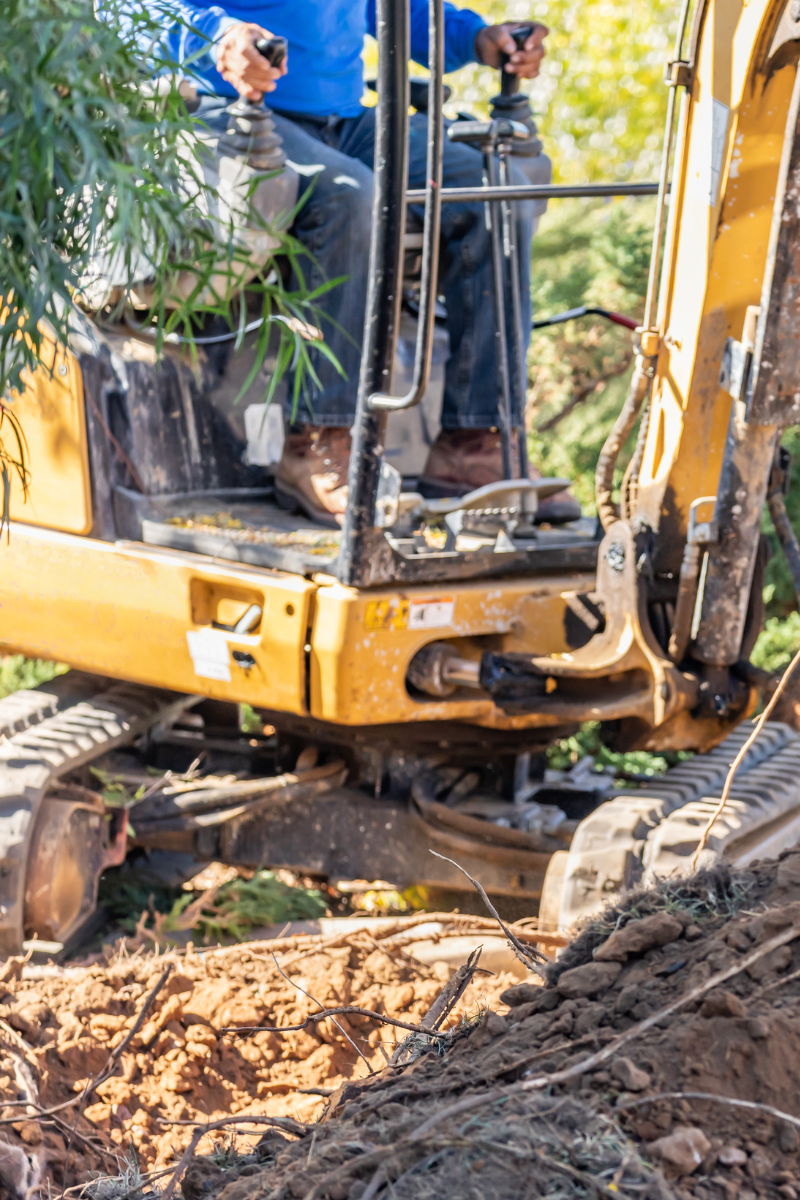How to Prepare Your Property for Excavation
- HGM Wix Admin

- Jul 12, 2024
- 3 min read

Properly preparing your property for excavation is crucial to ensure a smooth and successful project. This guide will walk you through the essential steps, from planning and permits to site preparation and safety measures.
Planning and Permits for Property Excavation Preparation
Step 1: Assess the Project Requirements Before you begin any excavation work, assess the specific needs of your project. Determine the size, depth, and purpose of the excavation. Understanding these requirements will help you plan effectively and avoid potential issues.
Step 2: Obtain Necessary Permits Check with your local building department to determine if you need permits for your excavation project. Regulations vary by location, so it's essential to comply with local laws to avoid fines and delays. Submit the required paperwork and obtain the necessary approvals before starting the project.
Step 3: Consult with Professionals If your project involves complex excavation work, consider consulting with professional engineers or excavation contractors. Their expertise can help you plan the project more efficiently and ensure that all technical aspects are addressed.
Assessing and Marking the Excavation Site
Step 4: Conduct a Site Survey Conduct a thorough survey of the excavation site. Identify any potential obstacles, such as utility lines, trees, or existing structures. Understanding the site's topography and soil conditions will help you plan the excavation more accurately.
Step 5: Mark the Excavation Area Use stakes and string or spray paint to mark the outline of the excavation area. Clearly define the boundaries to ensure accurate digging and prevent encroachment on neighboring properties or protected areas.
Step 6: Notify Utility Companies Contact your local utility companies to mark the locations of any underground utilities, such as gas lines, water pipes, or electrical cables. This step is crucial to prevent accidents and service disruptions during the excavation process.
Preparing the Site for Excavation
Step 7: Clear the Area Remove any obstacles from the excavation site, such as rocks, debris, and vegetation. Clear the area to provide a safe and unobstructed workspace for the excavation equipment.
Step 8: Set Up Erosion Control Measures Implement erosion control measures to prevent soil erosion and sediment runoff. Use silt fences, erosion control blankets, or temporary berms to protect the surrounding environment and comply with local regulations.
Step 9: Establish Access Routes Plan and establish access routes for excavation equipment and trucks. Ensure the routes are clear and stable enough to handle heavy machinery. Proper access routes minimize damage to your property and improve project efficiency.
Step 10: Prepare for Drainage Consider drainage solutions to manage water flow during and after the excavation. Install temporary drainage systems, such as trenches or pumps, to prevent water accumulation in the excavation area.
Safety Measures and Final Checks for Property Excavation
Step 11: Implement Safety Protocols Establish safety protocols to protect workers and property during the excavation. Ensure all personnel are trained on safety procedures and equipped with the necessary protective gear, such as hard hats, gloves, and safety glasses.
Step 12: Conduct a Pre-Excavation Inspection Conduct a final inspection of the site before starting the excavation. Verify that all preparations are complete, and check for any last-minute issues that need to be addressed. Ensure that all equipment is in good working condition and ready for use.
Step 13: Communicate with Your Team Maintain clear communication with your excavation team throughout the project. Hold regular meetings to discuss progress, address concerns, and ensure everyone is on the same page. Effective communication helps prevent misunderstandings and keeps the project on track.
Step 14: Monitor Weather Conditions Keep an eye on the weather forecast and plan your excavation activities accordingly. Avoid digging during extreme weather conditions, such as heavy rain or high winds, which can compromise safety and efficiency.
By following these essential steps, you can effectively prepare your property for excavation and ensure a smooth and successful project. Proper planning, site preparation, and safety measures are key to achieving the best results. Happy digging!



Comments